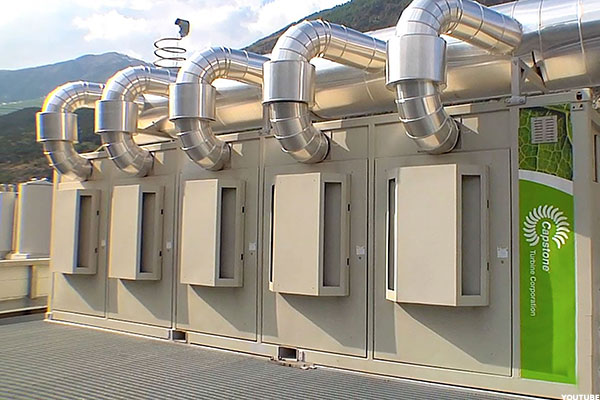Capstone Poised for Strong Growth as Supplier to Oil and Gas Producers
NEW YORK (TheStreet) -- The pressure to maximize efficiency is growing for oil and gas producers, possibly setting up Captone Turbine
Capstone makes microturbines, a relatively, small refrigerator-size engine that can generate electricity and improve efficiency, and that can capture and reuse waste heat lost in any production process.
Must Read: 12 Stocks Warren Buffett Loves in 2014
Companies are increasingly capturing and reusing thermal energy to produce heat and power for their facilities, a concept known in the energy community as cogeneration. At the same time, the push to lower carbon emissions is making the use of microturbines an obvious choice.
Capstone says its microturbines produce the lowest emissions of any fossil-fuel internal-combustion system and require low maintenance, because they have only one moving part. Additionally, different feedstocks, including wastes, can be used to power microturbines, allowing for greater financial flexibility to take advantage of pricing in natural gas, diesel, kerosene, propane or biogases.
For utilities, heat is an unavoidable byproduct of power plants, and so the ability to capture that heat while producing power is really getting the most out of an energy source and helping to lower their carbon footprint.

Considering microturbines can also lower emissions, decrease maintenance costs and add a sense of reliability to energy operations with aging infrastructure, there is added economic value for utilities to use turbines such as those offered by Capstone.
Because of their smaller size, roughly 15 to 300 kilowatts, microturbines can be scalable off the grid to help maximize energy production. For exploration and production companies that are struggling to lower production costs with declining oil and gas prices, microturbines help manage fuel output by converting heat from wellhead site gas or flared gas into electricity. That could lower operations costs and be an attractive source of power, especially at shale fields located in remote areas not easily connected to the grid.
Microturbines can also be used at coal sites, even closed mines which seep gas for years, to make emissions from the battle-scarred coal industry cleaner and put them to use as a power source.
Must Read: Biotech Ripe for Correction as Risk of Cycle Drawdown Looms
Most Commented